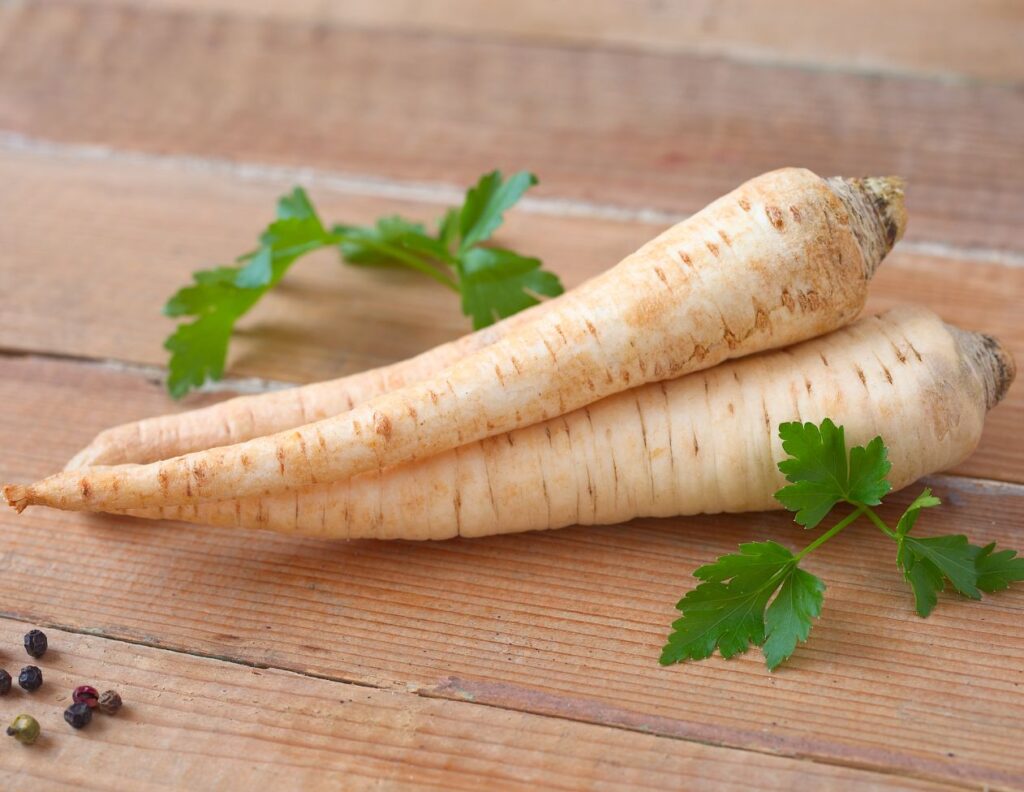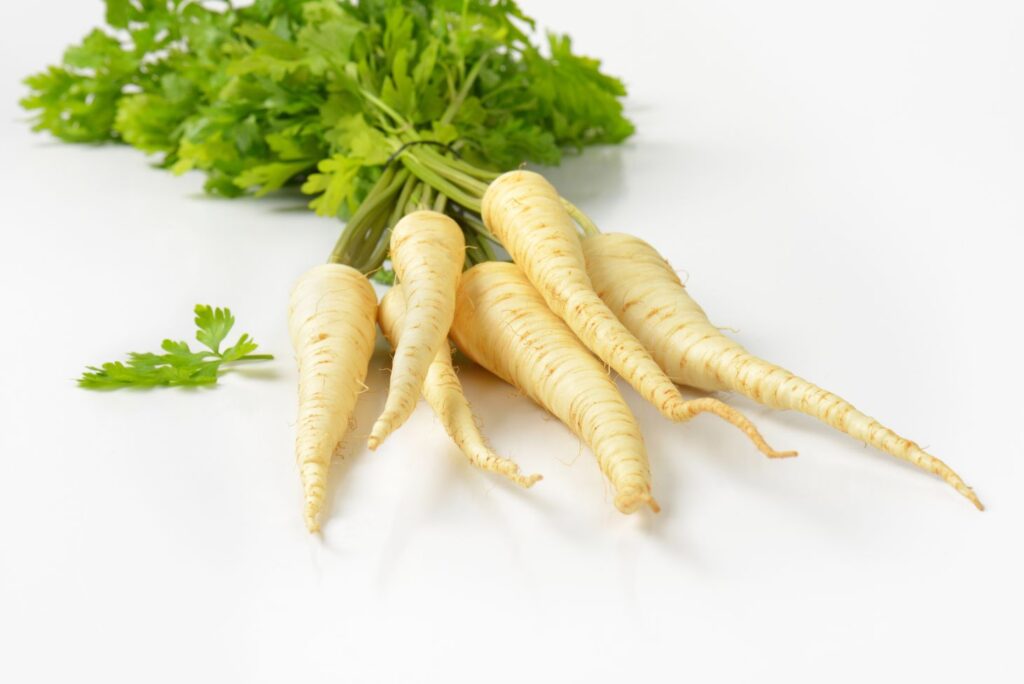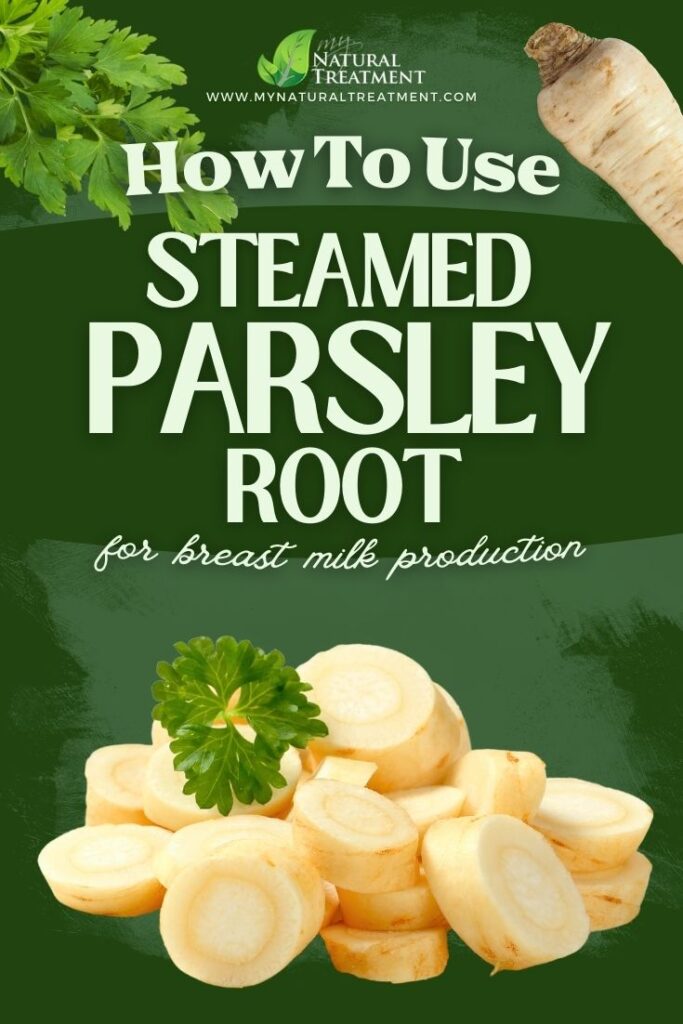Want to learn how to use steamed parsley root for breast problems, poor lactation, and low iron? Continue reading.
Steamed parsley root is one of the less known natural remedies for breast pain, but also for poor milk production and low iron. Steaming parsley root salad is quite easy to prepare, but its health benefits are worth noting. So before we show you how to use steamed parsley root for breast problems, here is a little about the health benefits of steamed parsley root. Let’s go.

Health Benefits of Steamed Parsley Root
Steamed parsley root can be consumed as such, in the form of puree, or added to various other dishes (soups, stews, stews, etc.). After steaming, approximately 70% of the vitamin A contained in the parsley root is destroyed, as well as vitamin C and many other nutrients. However, it is important to know that the vitamins and minerals left after steaming the parsley root may be much easier to assimilate by some individuals.
Moreover, steamed parsley root is very well tolerated by the digestive tract, being specially recommended for convalescence or for people who, due to gastrointestinal problems, cannot tolerate raw food. For these reasons, steamed parsley may sometimes have a greater therapeutic applicability than the raw parsley root.
How to Use Steamed Parsley Root for Breast Problems
- Boost Breast Milk Production – eat steamed parsley root and carrots (optionally together with steamed potatoes, for better taste). These two root vegetables stimulate lactation through their beneficial action on the endocrine system, but also ensure the necessary vitamins and minerals during breastfeeding. By consuming parsley root, both the quantity and quality of breast milk increases.
- Breast Pain – steam/boil three parsley roots, then allow them to cool down, mash them, and wrap them in thin cheesecloth, then apply to the painful area for 30 minutes. Immediately after removing the poultice, allow the breast area to air for at least an hour (do not wipe dry). This is a simple poultice that effectively fights breast inflammation and has a calming effect. In the case of breast pain and irritations that occur during breastfeeding, alternate these poultices with fresh cabbage leaves.
- Low Iron – eat 50-70 g of steamed parsley root daily, for 3 weeks. Parsley root contains quite large amounts of assimilable iron, useful in treating iron-deficiency anemia. Alongside, parsley root juice, beet juice, and carrot juice, (equal amounts), have also proven effective in treating hemolytic anemia.

Parsley Root Side Effects and Counterindications
Pregnant women should not consume more than 10 g of fresh parsley root per day. Parsley root juice is not recommended during pregnancy, because it can lead to premature contractions. This does not apply, however, in the case of boiled parsley root, which does not have these adverse effects (30 g per day maximum). People who suffer from chronic kidney problems should only have very small quantities of raw parsley root or parsley root juice when starting a cure, as the normal dosage may be irritating to inflamed kidneys.
Read Also: How to Make Parsley Root Salad
If you’ve enjoyed learning how to use steamed parsley root for breast pain, low milk production, and low iron, please share this article. In this way, you help more people reach this ancient information and thus enrich the world. Have you used parsley root for its medicinal properties before? Leave us a comment below and tell us how. Stay healthy, naturally!
Share on Pinterest ❤️

